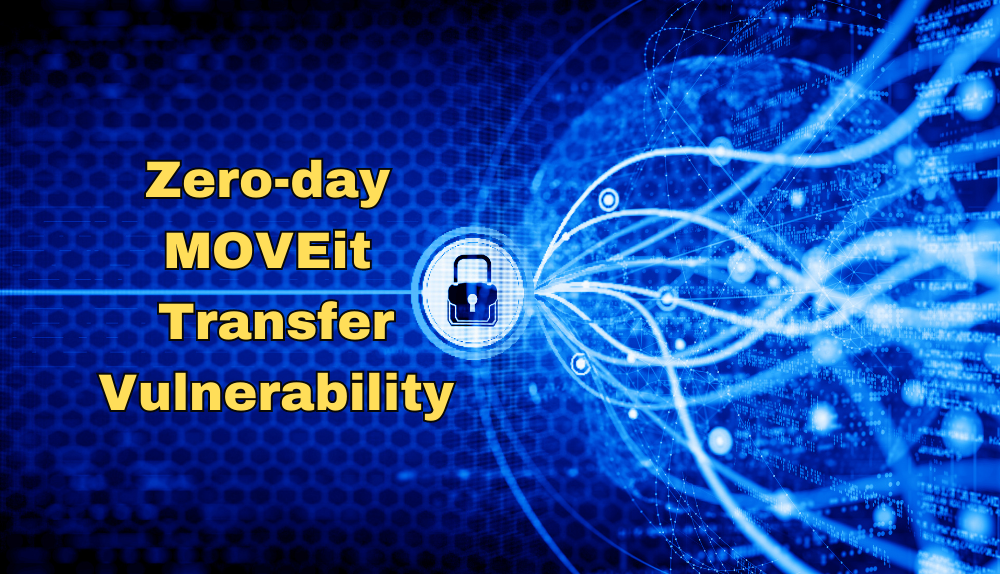2026 Cybersecurity Budgeting For Small And Medium-Sized Businesses
Prepare your business for the evolving cyber threat landscape in 2026 with strategic, cost-effective cybersecurity budgeting tailored for small and...

In today's interconnected world, small to medium-sized businesses face a constant threat of cyberattacks. Organizations must stay informed about potential security vulnerabilities that could compromise their data and operations. A zero-day vulnerability in MOVEit Transfer software, a widely used managed file transfer solution, has emerged as a significant concern. This article aims to raise awareness among small to medium-sized businesses about this security alert and provide essential guidance on detecting and mitigating the risk.
What is the zero-day MOVEit Transfer vulnerability? A zero-day vulnerability, known as CVE-2023-34362, has been identified in MOVEit Transfer software. This vulnerability allows unauthenticated attackers to gain access to the software's database through a SQL injection technique. Exploitation of this vulnerability may result in unauthorized access, alteration, or deletion of database elements. It is important to note that this vulnerability only affects MOVEit Transfer and not other components of the MOVEit suite. The Cybersecurity & Infrastructure Security Agency (CISA) has issued an alert regarding the exploitation of this zero-day vulnerability. Reports suggest that cybercriminals, including the ransomware threat actor Lace Tempest, have been observed targeting organizations primarily in North America. Rapid7, a leading cybersecurity company, has confirmed the active exploitation of this vulnerability across multiple customer environments.
To detect potential exploitation, system administrators should check for the presence of a file named "human2.aspx" in the www-root folder of their MOVEit Transfer software. Additionally, reviewing log files from the past month for unexpected file downloads/uploads from unknown IP addresses can provide vital clues.
How to mitigate this risk: To mitigate the risk associated with the MOVEit Transfer vulnerability, it is crucial to take immediate action. The following steps are recommended:
1. Apply the patch: The software developer, Progress, has released a patch to address this vulnerability. Organizations should promptly apply the patch to ensure they are protected.
2. Disable HTTP and HTTPS traffic: Temporarily disable all HTTP and HTTPS traffic to the MOVEit Transfer environment by modifying firewall rules. This will prevent attackers from exploiting the vulnerability while allowing essential services such as SFTP and FTP to continue functioning.
3. Delete suspicious files and accounts: Remove any unauthorized files, suspicious script files, and unknown user accounts from the MOVEit Transfer environment. Thoroughly analyze the MOVEit folder for any newly created or unknown files. Similarly, examine .cmdline files in temporary Windows folders.
4. Reset credentials and monitor for compromise: Reset all credentials associated with affected systems and the MOVEit Service Account. Continuously monitor network logs for any indicators of compromise and promptly investigate any suspicious activity.
When dealing with a particular vulnerability, it is crucial to incorporate supplementary security practices to bolster overall safeguarding. These measures encompass implementing multi-factor authentication (MFA) on MOVEit Transfer, which adds an additional level of protection. Additionally, it is recommended to revise remote access policies to restrict connections solely to recognized and trusted IP addresses. Furthermore, it is important to regularly assess and examine user accounts to guarantee that only authorized individuals possess access to the service.
The security alert for the MOVEit Transfer vulnerability highlights the importance of staying proactive in securing your business against cyber threats. By understanding the nature of the vulnerability, detecting potential exploitation, and implementing recommended mitigation steps, small to medium-sized businesses can significantly reduce their risk exposure. Additionally, adhering to best practices such as multi factor authentication and restricting remote access will contribute to an overall robust security posture. Remember, vigilance and swift action are crucial when it comes to safeguarding your organization's sensitive data.

Prepare your business for the evolving cyber threat landscape in 2026 with strategic, cost-effective cybersecurity budgeting tailored for small and...

Small businesses face escalating cyber threats that can jeopardize growth, reputation, and customer trust—strengthening cyber defenses is now...

AI-powered voice cloning is revolutionizing cybercriminal tactics, ushering in a new wave of compelling phishing attacks that threaten business...